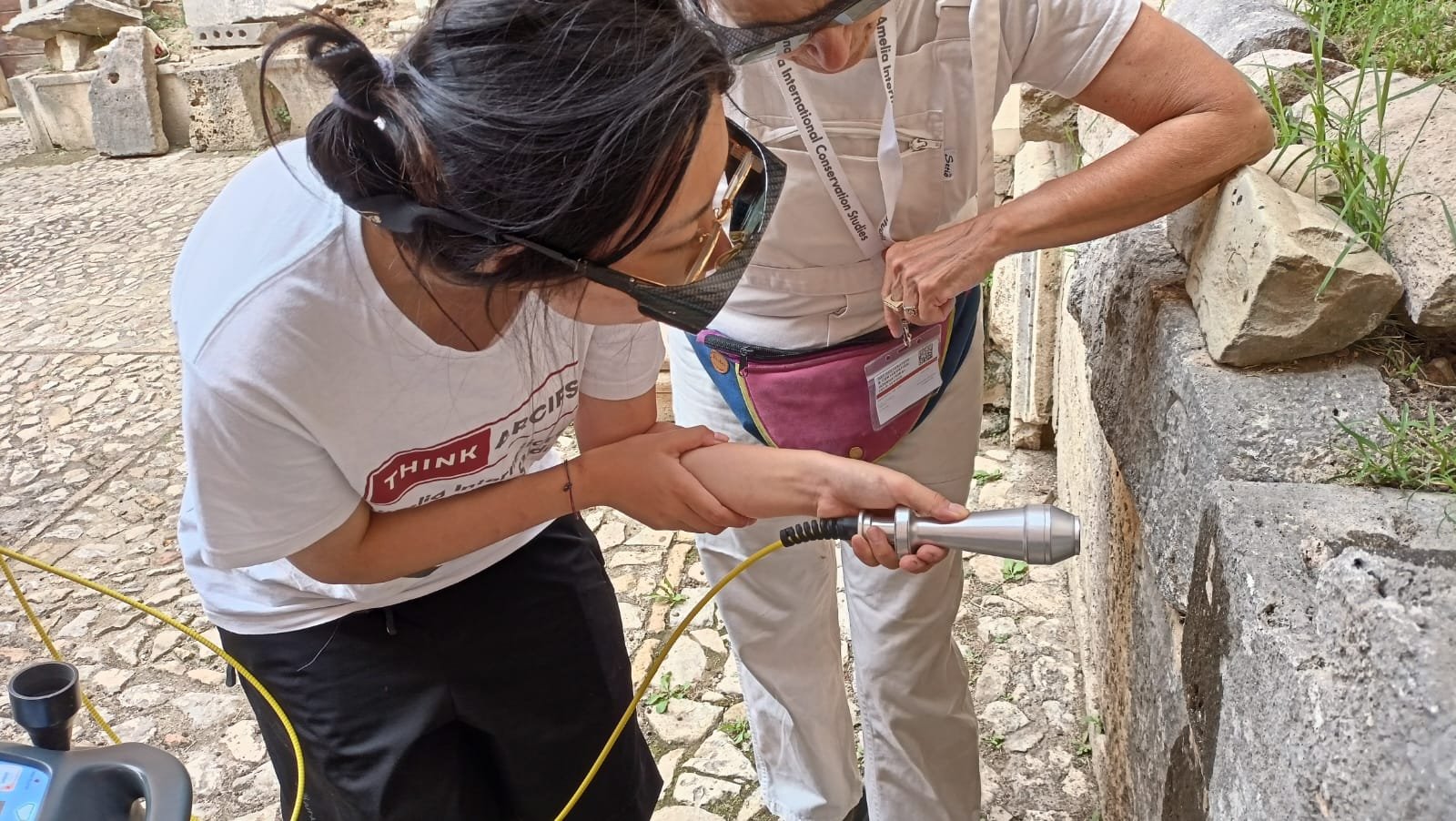
Amelia International Conservation Studies
Stone Conservation: Science and Ethics in Historic Preservation
Program Description
Amelia International Conservation Studies
June 8 - July 3, 2026
Amelia, Italy
This course introduces students to restoration of natural and stones derivatives/artificial stone surfaces in Italian historic monuments. Through lectures and hands-on workshops, it explores traditional materials and techniques used to create monuments and artwork integral to their structure. It also examines the various agents of deterioration that, over time, damage the materials and the different approaches to their restoration and conservation. Furthermore, the course also offers opportunities to explore, along with the most common restoration techniques, an advanced technique, such as laser cleaning.
The course investigates traditional monuments materials including natural stones and different types of traditional mortars. This course aims to introduce students planning a career in restoration to the field, and to offer a useful overview of the process and problematic examples of restoration to students involved in other aspects of the process of conservation and historic preservation. This course is suitable for students of restoration and conservation, historic preservation, architecture, art, art history, cultural history, engineering, anthropology, archaeology and museum studies.
Course 1
Instructor: Prof. Luciana Festa
Restoration of Historic Monuments in Italy
This course introduces students to restoration of natural and artificial stone surfaces in Italian historic monuments. Through lectures and hands-on workshops, it explores traditional materials and techniques used to create buildings and artwork integral to their structure. It also examines the various agents of deterioration that, over time, damage the materials and the different approaches to their restoration and conservation.
The course investigates traditional monuments materials including natural stones, different types of traditional mortars, decorative plasters and cements.
The objectives for this course are to introduce students planning a career in restoration to the field, and to offer a useful overview of the process and problematic examples of restoration to students involved in other aspects of the process of conservation and historic preservation.
This course is aimed at students of restoration and conservation, historic preservation, architecture, art, art history, cultural history, engineering, anthropology, archaeology and museum studies.
Students who successfully complete this course will be able to:
• Identify various stones, mortars, cements, and other monuments materials, their use in architecture, their physical properties, and appropriate restoration methods.
• Analyze materials and apply treatment methods to clean stone or brick surfaces.
• Assess, recommend, and treat architectural surfaces by consolidating, cleaning/removing the inappropriate materials, filling the gaps such as mortaring and repointing, protecting and carrying out an esthetical treatment, where necessary.
Course 2
Instructor: Prof. Alberto Sucato
History, Theory and Ethics of Restoration
From a contemporary perspective, the question “What is conservation?” has ceased to be interpreted as a straightforward prolongation of the material life of artworks to the future. In fact, the action of restoration requires to take into account a variety of factors and stakeholders affecting the identity and meaning of the objects themselves, embedded within cultural, political and economic contexts.
This course will explore the historical path shaping the conservation discourse, from the earliest examples in the ancient time, identifying the different approaches and trends in cultural heritage conservation and their influence on heritage practice from an anthropological, aesthetic and scientific point of view.
Classes will involve history and theory of conservation of a variety of artworks and artifacts (archaeological, architectural, pictorial, sculptural as well as contemporary artworks and new-media) and provide insights into the conservation practices.
The aim of the course is to help students develop a critical approach toward conservation practice and theory as a multiplex and complex activity, entangled in specific cultural and subject-dependent context. This involves the assessment of the goals and values that guide and influence restoration and conservation activities.
Discussions about the ethics of cultural heritage will be presented, from the 20th century focus on responsibilities to stakeholders, professional standards and concepts to a broader approach in which ethics is integrated to all heritage theory, practice and methods, fostered by the shift to human rights, social issues and heritage political economy, as a future-focused domain of social action.



